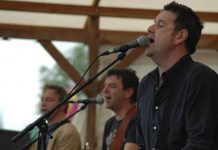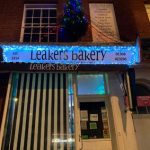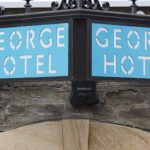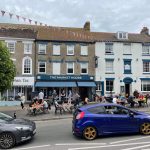 The Wikipedia entry for the town says its origins are Saxon. It goews on to say that during the reign of King Alfred it became one of the four most important settlements in Dorset – the other three being Dorchester, Shaftesbury and Wareham – with the construction of fortifications and establishment of a mint.
The Wikipedia entry for the town says its origins are Saxon. It goews on to say that during the reign of King Alfred it became one of the four most important settlements in Dorset – the other three being Dorchester, Shaftesbury and Wareham – with the construction of fortifications and establishment of a mint.
Bridport’s name probably derives from another location nearby. In the early 10th century the Burghal Hidage recorded the existence of a fortified centre or burh in this area, called ‘Brydian’, which is generally accepted as referring to Bridport. ‘Brydian’ means ‘place at the (River) Bride’, and this name may have come from an earlier burh in the Bride Valley a few miles to the east, which perhaps was abandoned or not completed in favour of the harbour site at Bridport. A probable location for an earlier burh is at Littlebredy. In 1086 the Domesday Book recorded that the town was called ‘Brideport’;’port’ is Old English for a market town, thus ‘Brideport’ may have described the market town belonging to or associated with Bredy. At a later date, in a reversal of a more typical derivation, the town lent its name to the river on which it stood; previously this had been the River Wooth, but it became the River Brit.
The Domesday Book recorded that Bridport had 120 houses in the reign of Edward the Confessor (1042–1066). In 1253 the town was awarded its first charter by Henry III, and by the subsequent reign of Edward I Bridport sent two members to Parliament. In the 14th and 15th centuries, like other Dorset coastal towns, Bridport suffered heavy losses due to frequent outbreaks of the Black Death; one 14th-century account by Geoffrey Baker recorded that the disease “almost stripped the seaports of Dorset of their inhabitants”. Around this time the town was also subjected to attacks by raiding French and Spanish forces.
Since the Middle Ages Bridport has been associated with the production of rope and nets. The earliest official record of this industry dates from 1211, when King John ordered that Bridport make “as many ropes for ships both large and small and as many cables as you can”. The raw materials needed, flax and hemp, used to be grown in the surrounding countryside, though they were superseded in modern times by artificial fibres such as nylon.Bridport’s main street is particularly wide due to it previously having been used to dry the ropes, after they had been spun in long gardens behind the houses. Ropes for gallows used to be made in the town, hence the phrase “stabbed with a Bridport dagger” being used to describe a hanging.
In the English Civil War (1642–1651) the population of Bridport mainly supported the royalists. At the end of the war in 1651 Charles II briefly stayed in the town as he sought to escape Parliamentarian forces after his defeat at the Battle of Worcester.
Many buildings in Bridport, particularly in the main street, date from the 18th century. Bridport Town Hall was built in 1785-6, with its clock tower and cupola added about twenty years later Older buildings can be found in South Street, and include the 13th-century St. Mary’s parish church, the 14th-century chantry and the 16th-century Bridport Museum. During the 19th century Bridport’s population grew little, unlike many Dorset towns although many sturdy buildings were constructed at this time, showing that at least parts of the population remained prosperous. In 1857 the Bridport Railway was opened, which joined the town with the existing national rail network. This benefitted the town’s textile industry and brought cheaper goods such as coal to the area. In 1884 the line was extended from Bridport’s station to a new terminus on the coast at Bridport Harbour, which was renamed West Bay as part of attempts to promote it as a resort. The West Bay extension closed to passengers in 1930 and all traffic in 1962. The entire Bridport line closed in 1975.










